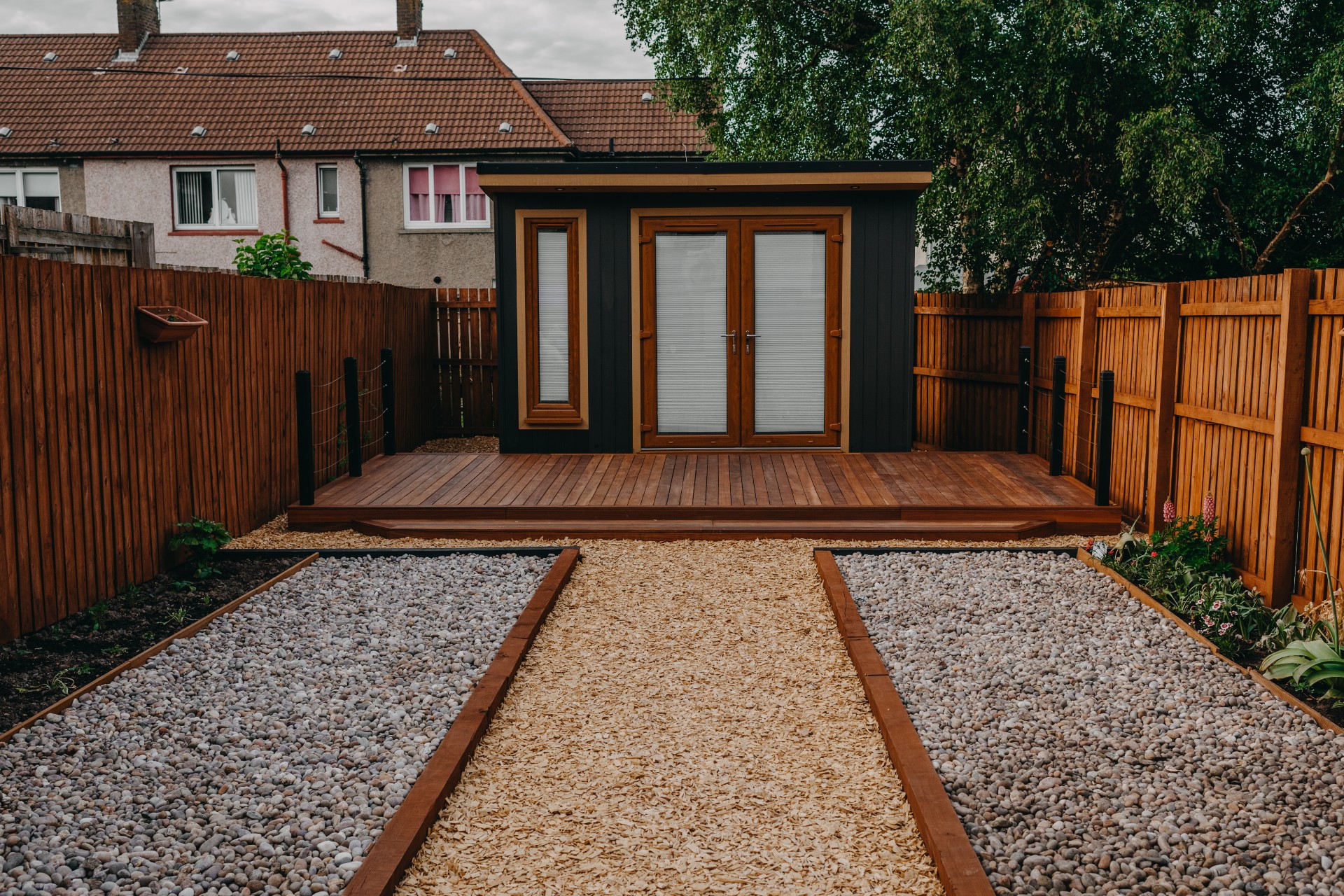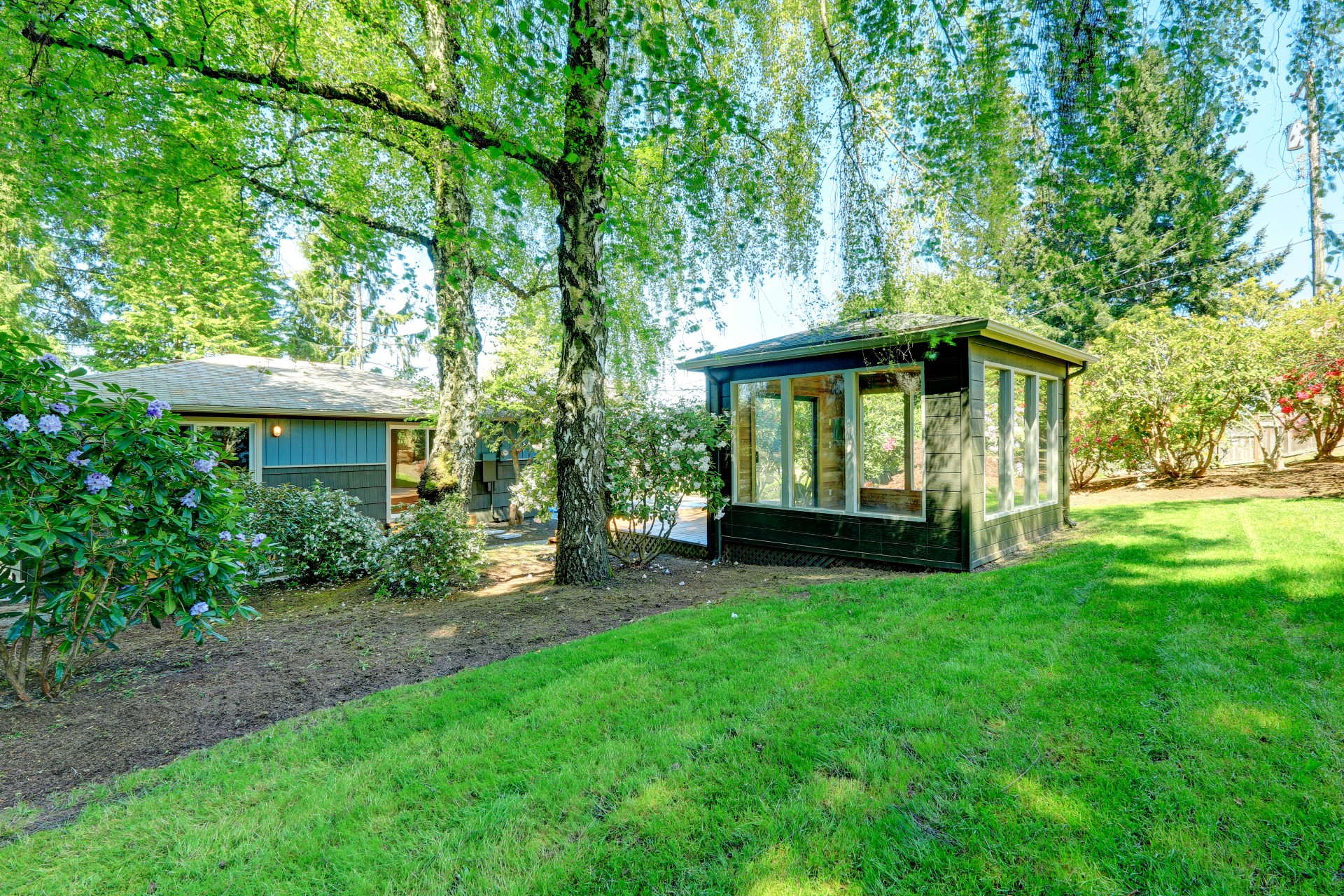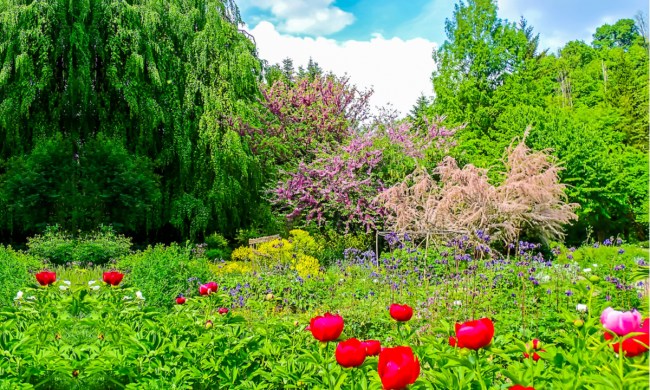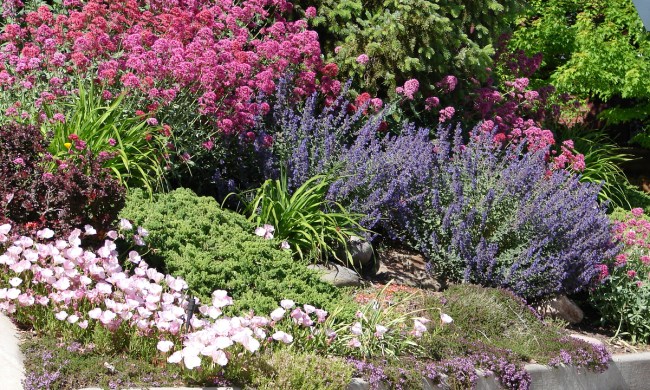Your new contemporary garden will be your very own sanctuary: A place to unwind, entertain guests, and soak up inspiration as often as you need it. To create just the right effect, you might want to consider the contemporary garden aesthetic. This clean, modern-looking space seamlessly combines pathways, furniture, plants, minerals, and more to create a symphony all of your own.

What is a contemporary garden?
A contemporary garden room is a place of refuge, relaxation, and renewal. It is somewhere that you can feel proud to entertain your friends and unwind from the rigors of daily life. Your own special garden room can reflect your personality as well as the design aesthetic already present in your home.
Simple, balanced, clean, and integrated are some adjectives frequently used to describe the look, feel, and design aesthetic of modern garden spaces. A contemporary garden often relies on straight edges and lines that are closer to those of a square than the playful curves of a circle.
Many modern gardening enthusiasts treat the creation of their contemporary garden rooms like an “open plan space.” The goal here is not to pack in as many things as possible, but instead to focus on symmetry and unity between all the different elements forming your special space.
Your new specially designed garden room can be colorful and vibrant or neutral and serene. You can incorporate artwork, antiques, and treasured personal items such as books or simply allow the living plants of your space to speak for themselves. Your garden room is your distinctive space and should reflect the modern design aesthetic that you hold dear.
How do you create a contemporary garden?
For many gardeners and designers alike, inspiration begins with the creation of a form, structure, model, or diagram. You can use a simple paper, pencil, and colored markers. You could also use a sophisticated graphic design program. The choice is yours, but many people find putting their design on paper or screen is a great way to test and explore ideas.
Remember, a contemporary garden space is meant to be simple, clean, and flowing. The lines tend to be straight and the angles tend to be closer 90 degrees than circular. Place raised plant beds or potted plants along the walls of your space to create clear borders. Incorporate textural changes from rocks, stones, branches, or other natural items to accentuate the vibrancy of the plants in your garden room.
Don’t be afraid to test out different arrangements. In general, you will want to choose plants that work well with the lighting and soil conditions in your region and specific room. Beyond that, remember that this is about relaxation, creativity, and self-expression.
How do I budget my garden?
Budgeting a garden, like planning for a vacation, is a personal process. What some might consider extravagant, others will consider absolutely normal. You can spend as much or as little on your new garden space as you want. Choose to splurge on big ticket items such as antique vases or simply enhance normal planting pots with your own artistic touch — the choice is yours. Just because certain plants, gardening accessories, or tools are more expensive does not mean they will necessarily offer you a more tranquil and pleasant space.
You can absolutely create a garden room that you are proud of on a budget. You just need to prioritize which elements of your design are most essential for your new space. If necessary, start slow and continuously add to your space on a weekly or monthly basis.
As you play and explore in your new contemporary garden room, you will learn more about yourself and the unique design inspirations that move you. Enjoy this process and remember that gardening is a relaxing and enjoyable way to nurture living things while enhancing your own quality of life.
How do you design a garden?
Your new contemporary garden can include a single plant or as many species as your particular space will allow. You can choose to add luxurious extras such as flowing water features, koi fish, and unusual plant species or stick to the basics of potted plants.
Designing your perfect garden space means exploring your own creativity and what moves you. Don’t be afraid to get down and dirty. Be open to trying things out.
Bring your space to life

As an extension of the rest of your home, your garden is an opportunity to express yourself. Take the time to plan your garden and watch it come to life. You might find the creative process to be just as thrilling as enjoying the finished result.
There are many elements that can make up the contemporary garden, and the truth is, there are no hard and fast rules. Be inspired and take chances. If you can’t find inspiration on your own, don’t be afraid to copy other people’s designs. Your new garden can be inspired by a single photograph, your entire vision wall, or a special movie you really love. Inspiration for your design can come from anywhere and that’s OK.
Bringing your contemporary garden room to life does not have to cost a fortune. In fact, you can create a stunning space with whatever budget you have available. Remember, Rome wasn’t built in a day and the same might be said of your new garden room. That’s totally fine, take the time to create your space and feel free to update it as often as you like. It’s all about you!


